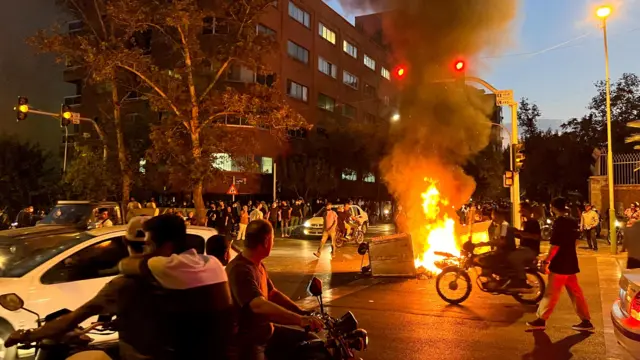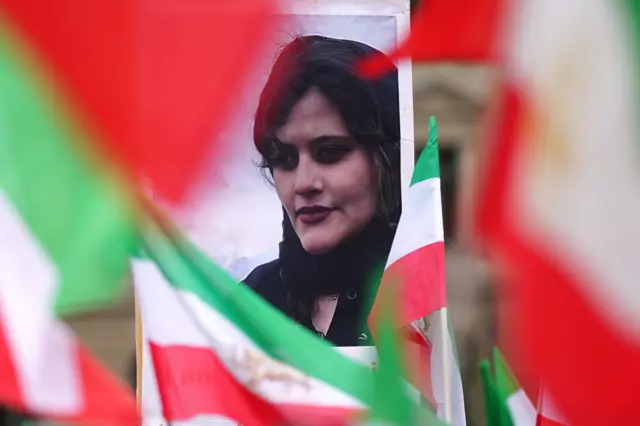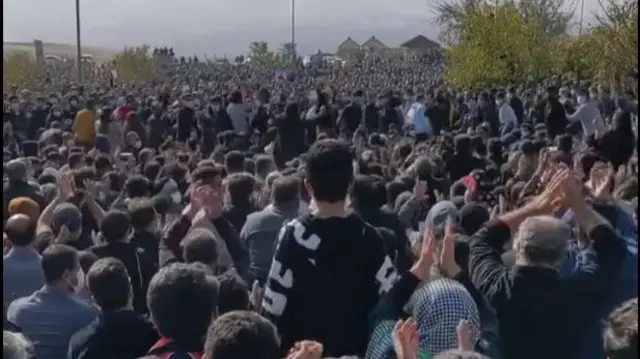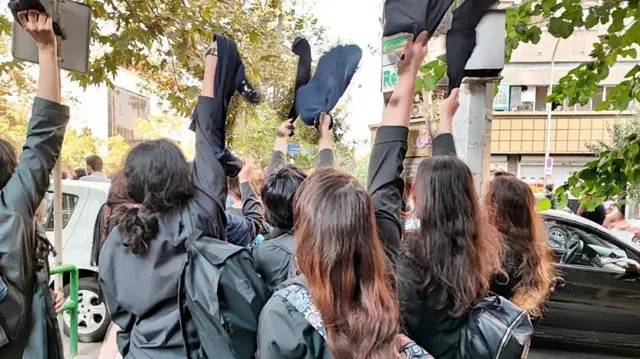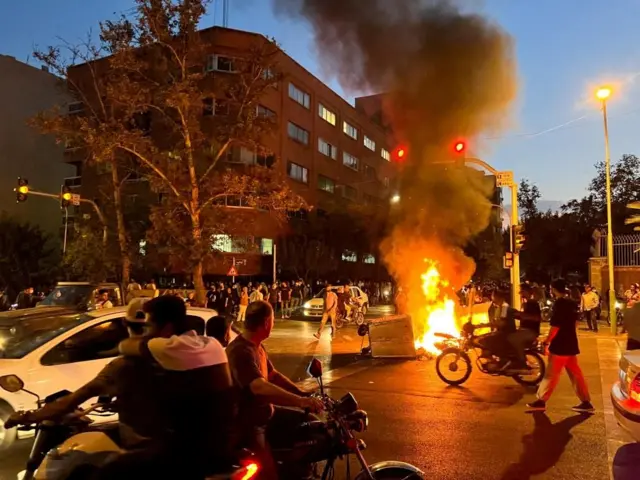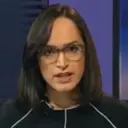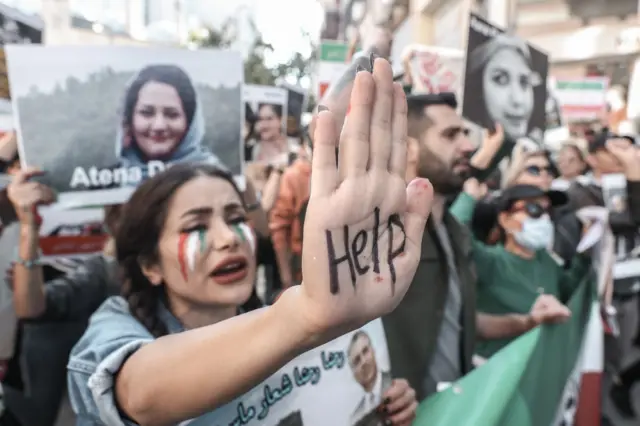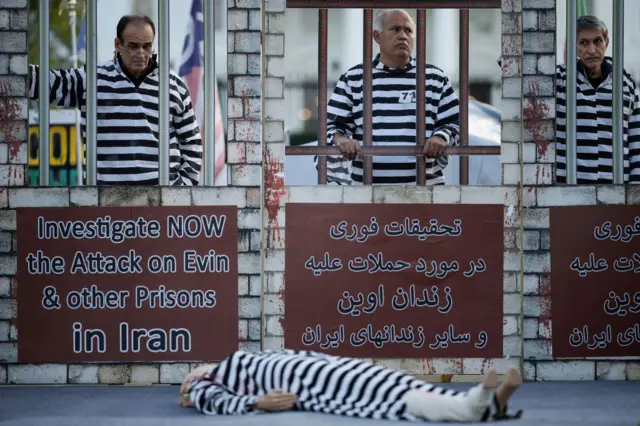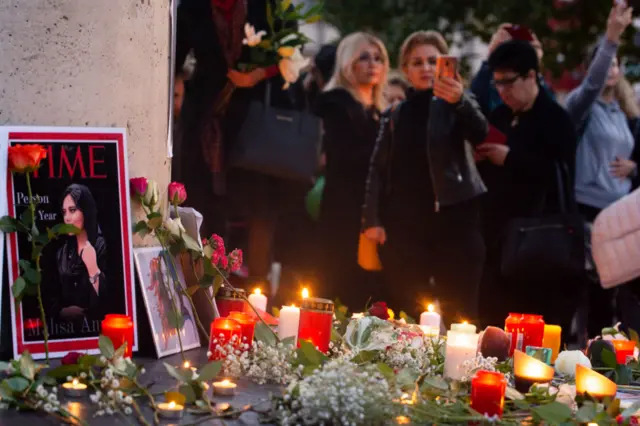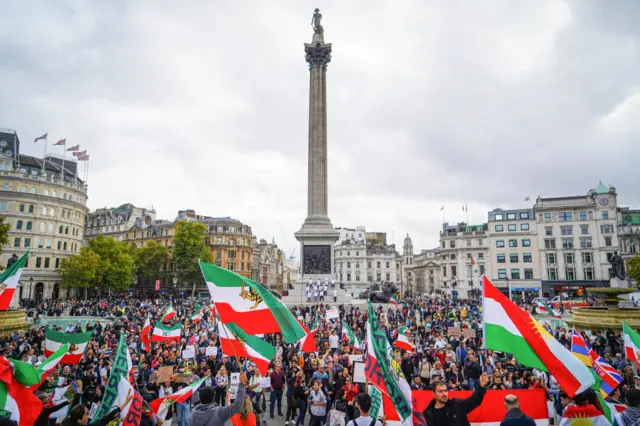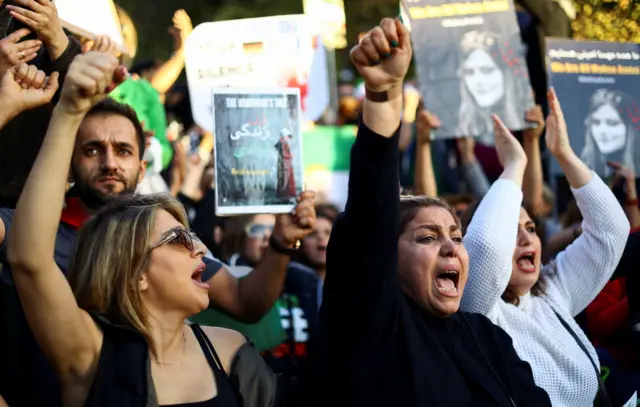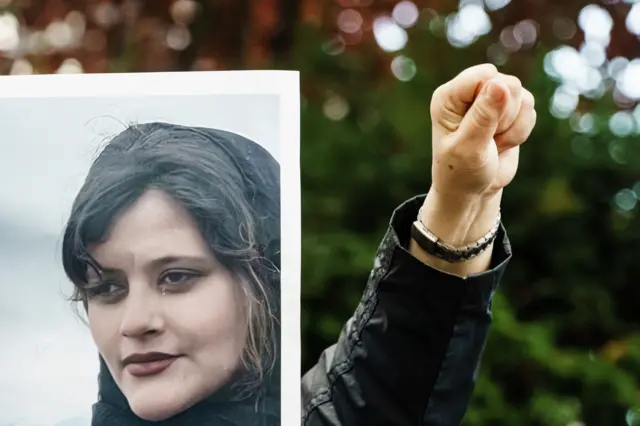Fresh crackdown on protesters mourning the death of another young womanpublished at 14:47 BST 27 October 2022
Laura Gozzi
BBC News Live Reporter
Iranian authorities are reported to have today used violence against demonstrators who'd gathered to mark the death of Nika Shakarami, another symbol of the protest movement.
A source close to her family told BBC Persian that security forces opened fire on protesters who'd gathered at a cemetery in which Shakarami is buried in Khorramabad, a city in her home region.
Rallies also took place in the region yesterday, with protesters carrying banners bearing her name.
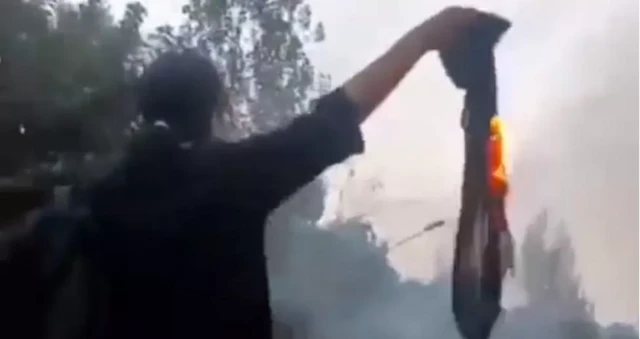 Image source, Twitter
Image source, TwitterThe 16-year-old was filmed burning a headscarf before going missing
Shakarami, 16, disappeared in the aftermath of a protest in Tehran on 20 September in which she was filmed burning her headscarf. At the time, she told a friend she was being chased by police. Her family said they located her body at the mortuary 10 days after she went missing.
Her mother accused security forces of murdering her daughter, but officials have said Shakarami died by suicide by jumping from a building and denied ever arresting her.
Earlier today, in a development that threatens to fuel the protests, CNN released an investigation, external which the US network says provides proof that Shakarami was indeed arrested by security forces.
The investigation features unseen footage of a young girl leading the crowd in throwing stones, and then hiding from the police between passing cars. CNN said it identified her as Shakarami.
The eyewitness who provided the video told the CNN that they saw the teenager arrested by "several big security officers".

